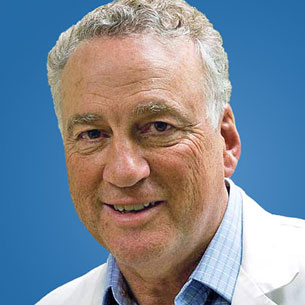It is difficult (but not impossible) to reflect on the fact that one of the key reasons I went into medical oncology was the seminal study by Bonadonna published in 1976 showing a dramatic reduction in cancer recurrence among women with breast cancer and positive axillary nodes who received CMF chemotherapy [cyclophosphamide, methotrexate and fluorouracil].
Subsequently, tens of thousands of women participated in clinical trials to further refine which drugs (including many new ones), which clinical presentations (e.g., node-positive or node-negative, hormone and growth factor receptor status, menopausal status, etc.) benefited most from different treatments in randomized controlled trials. Medical oncologists, surgeons, and radiation oncologists collaborated in advancing our understanding of how best to treat these patients, resulting in multidisciplinary clinics that are now a standard of care in most medically advanced countries.
What went wrong with prostate cancer?
Certainly, there were some efforts to replicate the breast cancer experience. Indeed, the National Prostate Cancer Project studied single agents in the late 1970s with hints of improvement in progression free survival. Yet, it was 17 YEARS (!) before the CMF regimen ("combination chemotherapy") was found to have minimal activity in advanced prostate cancer in a small clinical trial.
Following this, mitoxantrone as a single agent was found to improve quality of life in metastatic prostate cancer, and my colleagues and I started a study to evaluate it in combination with two years of ADT in high-risk post-surgery patients. However, it wasn't until a truly active chemotherapy class, the taxanes became available that real progress could be forecast.
Nevertheless, the numbers of patients being placed on trials remained abysmal compared to breast cancer. Cooperation between medical, surgical (urologic), and radiation oncologists has lagged in the U.S. as physicians debated "who really knows this disease best?" rather than relying on collaborative improvement in care.
Potentially, we are finally at the end of this dark tunnel. The ASCO/ASTRO/SUO annual GU cancers symposium started off with a few hundred participants and now attracts thousands of physicians and scientists from around the world.
Moreover, we are seeing the fruits of improved collaboration in the form of the CHAARTED trial, as well as the new data emerging from the STAMPEDE trial, presented at the 2015 ASCO Annual Meeting. This European trial has multiple arms and in a pre-ASCO meeting press conference, chemotherapy with docetaxel has again been shown to improve survival for men with metastatic disease compared to ADT alone. Moreover, the study will soon have mature data on the use of such treatment in the adjuvant setting following surgery/radiation, and we look forward to the results.
My colleague, Dr. Garnick, has urged caution in rushing to establish early use of docetaxel as a new standard of care, pointing out the potential benefit of adding the newer second-line hormones (abiraterone, enzalutamide, TAK 007, etc.) which have fewer side effects. This seems like sound advice, particularly since one of the mechanisms of action of docetaxel may indeed be inhibition of translocation of the androgen receptor to the nucleus of cancer cells—in other words, docetaxel might be just a more toxic way of inhibiting the AR signaling pathway.
The good news is that after watching Komen and women "race for the cure," we are no longer "crawling for the cure" in prostate cancer. Men of good will (including all of you who support Movember) and their physicians are newly energized to make progress. It is an altogether satisfying situation to observe as I near the end of my oncology career!
This post originally appeared on prost8blog, a blog to help patients and their families understand various aspects of prostate cancer, and is republished here with permission from Dr. Glodé.



Comments
Katharina Pachmann, MD
Aug, 07 2015 4:04 AM
I am not sure whether the "crawling" in prostate cancer may not have been more beneficial than the the "race for cure" in breast cancer. Maybe the watch and wait strategy might be more adequate also in some breast cancer patients with less toxicity and better quality of life especially in elderly patients.
With regard to ADT which reduces PSA, are you sure that it not only silences cells and inhibits them from producing PSA but with no true reduction in tumor load. An increase in PSA would then signal renewed activity of the cells still present in the body without necessarily being a sign of regrowth of cells.
We are analyzing the prostate (tumor) cell numbers in blood more close to reality than the CellSearch approach an could be helpful in monitoring whether tumor growth is truely activated.
Best regards
Katharina Pachmann
L. Michael Glode, MD, FACP, FASCO
Aug, 07 2015 11:17 AM
Good points. Overdiagnosis in both diseases is a real challenge, although I understand that autopsy incidence of incidental breast cancer is considerably lower than pca in the elderly which may point to some differences. Agree that understanding the psa silencing vs cell death is a big question. One problem with circulating tumor cell analysis is that in patients with low tumor burden, (rising psa with no imaging studies positive) they aren't there. The circulating DNA/RNA liquid biopsies may eventually help if signal/noise issues can be appropriately dealt with.